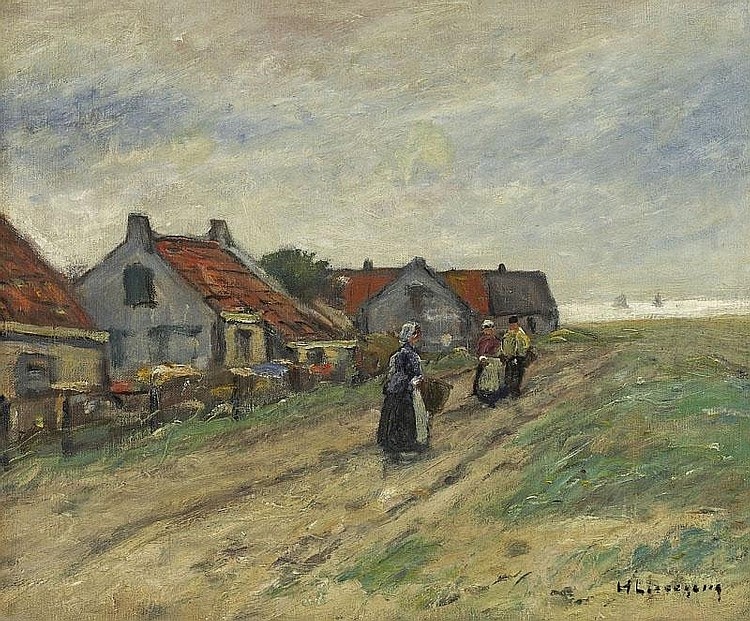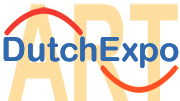
Paintings
Helmuth Liesegang
Liesegang was the son of a grammar school teacher. He was educated at the Kunstacademie Düsseldorf, where he studied from 1883 to 1893 with, among others, Eugen Dücker. In 1885 he traveled with Arthur Kampf to Paris, where he came under the influence of the painters of the Barbizon School, in particular Jean-François Millet and Jules Bastien-Lepage. He also visited Italy and Spain. In 1891 he founded the Düsseldorf "Lucas-Club" with Eugen Kampf, Heinrich Hermanns and his friend Olof Jernberg, later incorporated into the "Freie Vereinigung Düsseldorfer Künstler", where he promoted a style that was a cross between naturalism and impressionism. .
From the late 1880s until the First World War, Liesegang worked extensively in the Netherlands and Belgium, where he adapted the style of the Hague School. He also came under the influence of Max Liebermann, whom he met in Katwijk aan Zee, reflected in a light palette with sometimes bright accents of color. He painted typical Dutch town and village views, river dunes and beach views and landscapes. He often worked in Katwijk or in Dordrecht and the surrounding area. In his memoirs written at a later age, he remembers, in the atmosphere of his works: "I found a village near Dordrecht, Gysenkerk, to be particularly beautiful. Entirely surrounded by water, it lay in great loneliness and reflected with its small church in the quiet At nine o'clock in the evening everyone slept, and the night watchman with his horn made a round through the village and blew the hours. It must have been the last night watchman ".
Liesegang was a member of the Hollandsche Teekenmaatschappij. He has been awarded several times, especially in his native country, including the Goethem Medal for Art and Science and the Cornelius Prize. He died in 1945 at the age of 88. His work can be seen in the Katwijks Museum and the Museum Kunstpalast in Düsseldorf.
re. https://nl.wikipedia.org/wiki/Helmuth_Liesegang
The artworks below by Helmuth Liesegang are available at
From the late 1880s until the First World War, Liesegang worked extensively in the Netherlands and Belgium, where he adapted the style of the Hague School. He also came under the influence of Max Liebermann, whom he met in Katwijk aan Zee, reflected in a light palette with sometimes bright accents of color. He painted typical Dutch town and village views, river dunes and beach views and landscapes. He often worked in Katwijk or in Dordrecht and the surrounding area. In his memoirs written at a later age, he remembers, in the atmosphere of his works: "I found a village near Dordrecht, Gysenkerk, to be particularly beautiful. Entirely surrounded by water, it lay in great loneliness and reflected with its small church in the quiet At nine o'clock in the evening everyone slept, and the night watchman with his horn made a round through the village and blew the hours. It must have been the last night watchman ".
Liesegang was a member of the Hollandsche Teekenmaatschappij. He has been awarded several times, especially in his native country, including the Goethem Medal for Art and Science and the Cornelius Prize. He died in 1945 at the age of 88. His work can be seen in the Katwijks Museum and the Museum Kunstpalast in Düsseldorf.
re. https://nl.wikipedia.org/wiki/Helmuth_Liesegang
The artworks below by Helmuth Liesegang are available at
